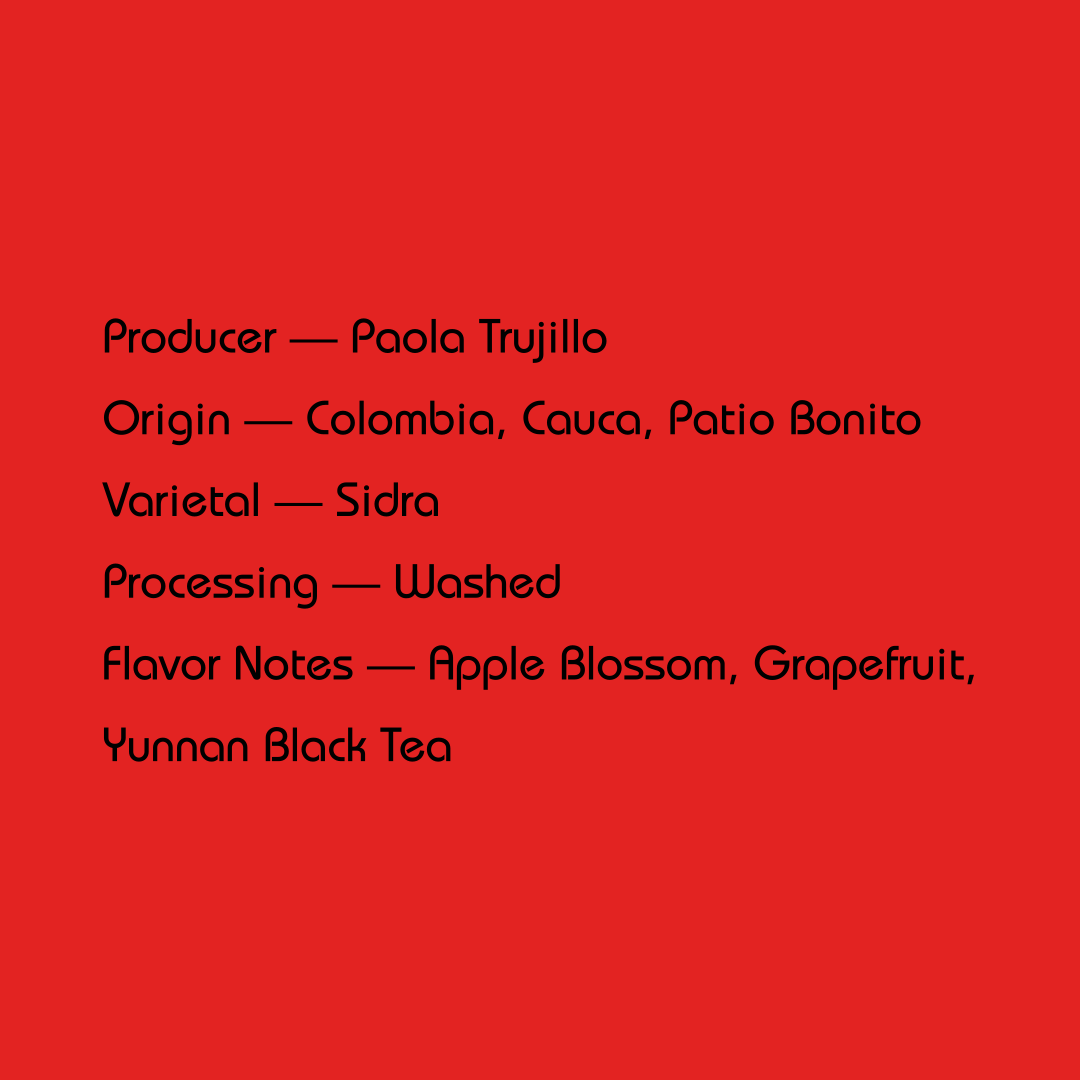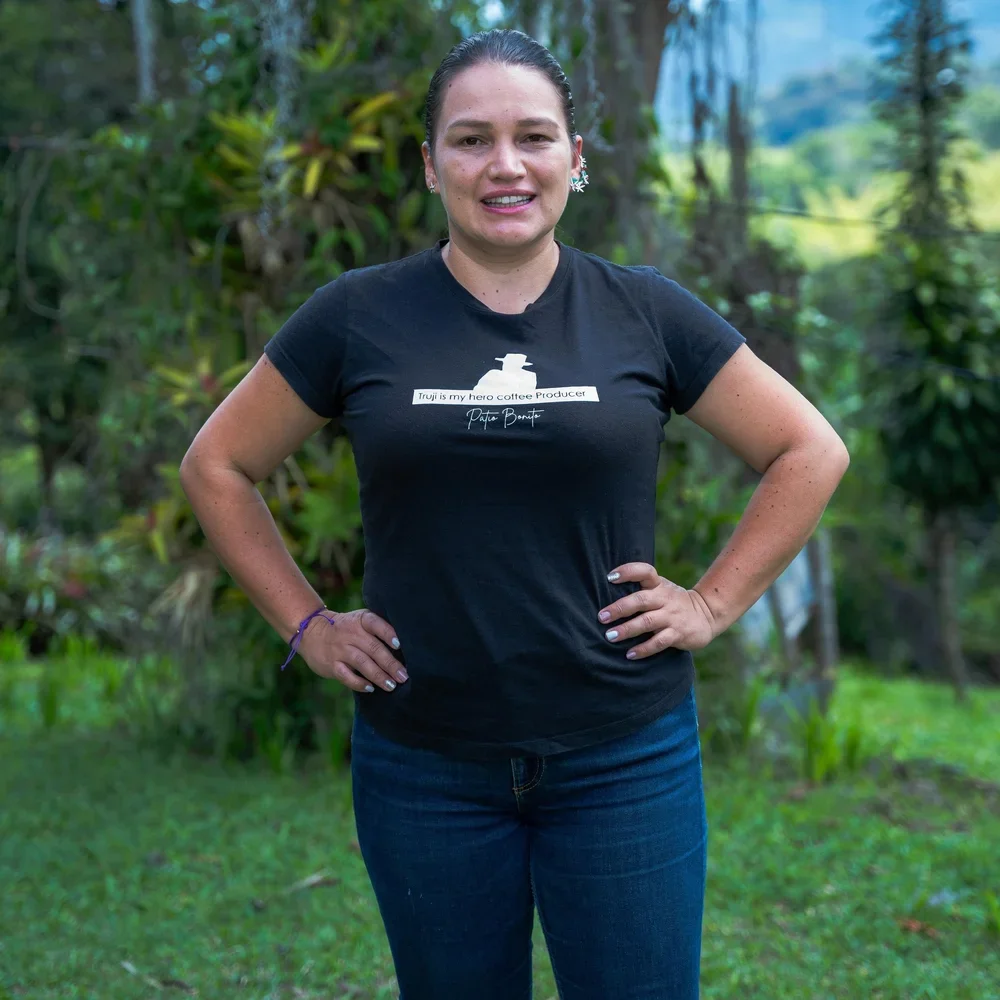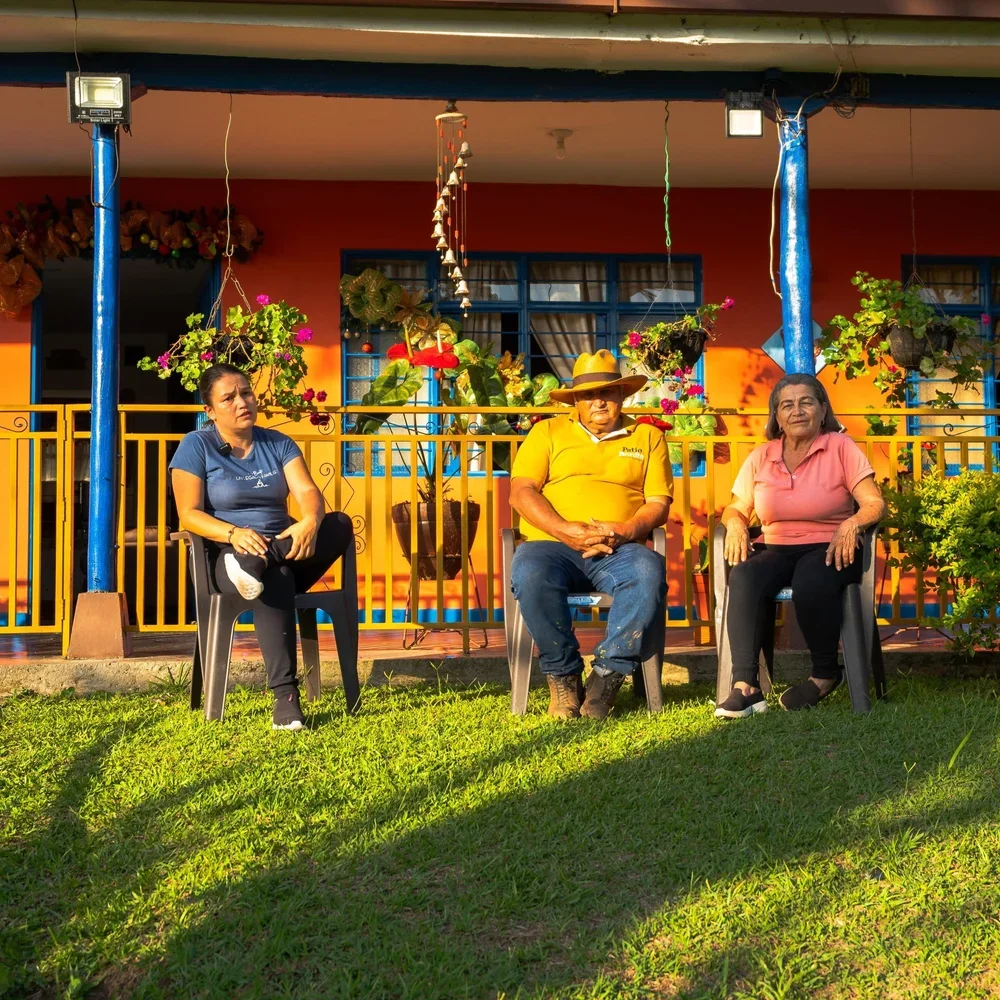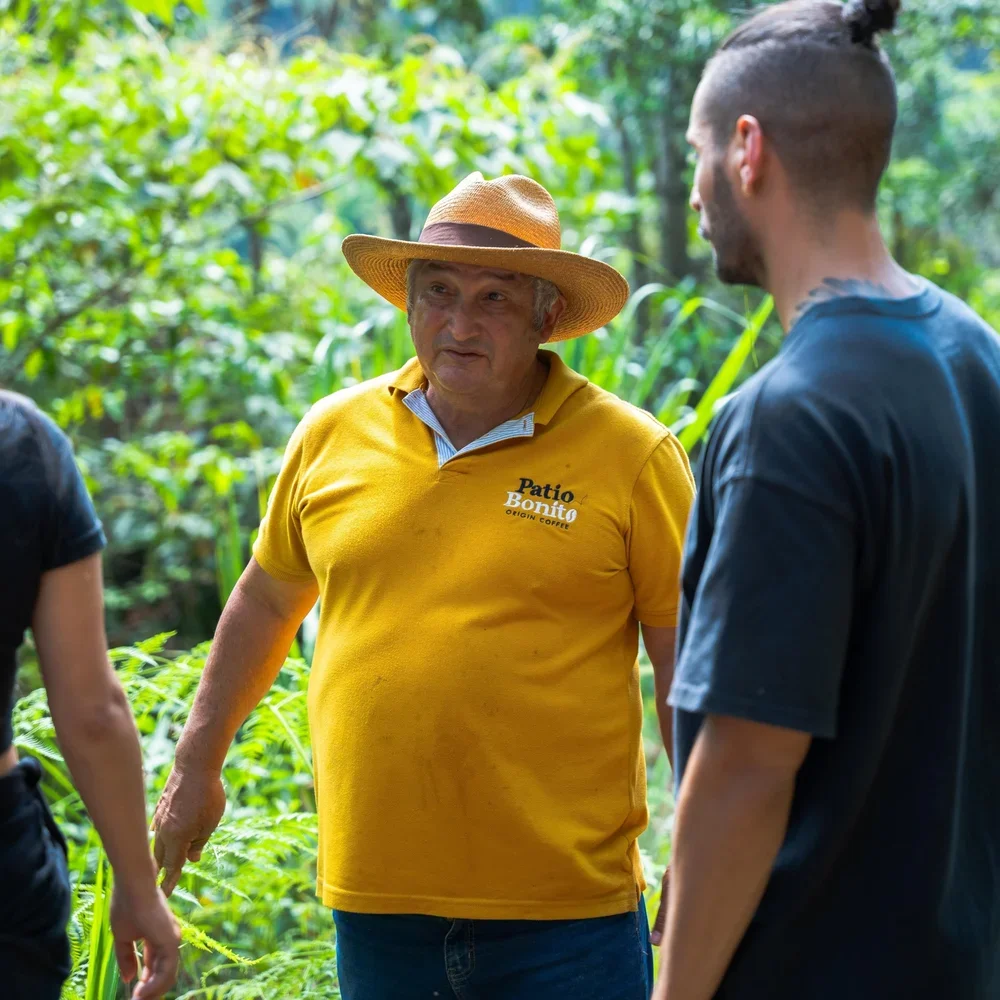 Image 1 of 3
Image 1 of 3

 Image 2 of 3
Image 2 of 3

 Image 3 of 3
Image 3 of 3




Colombia Paola Trujillo Sidra
We’ve be eagerly awaiting the moment when we could share more coffee produced by one of our very favorite Colombian producers, Paola Trujillo of Finca Patio Bonito, Cauca—and that moment has finally arrived. This endlessly drinkable washed sidra is a prime example of the fully-realized potential both of the terroir of the Cauca region, as well as the sidra varietal, when intentionally and meticulously cultivated, as it is on Paola’s farm. When sipping on this one, we find the aetherial aromatics of apple blossom, which is brought to life by the bright, pink and orange acidity of grapefruit, with the delicate, lingering and slightly tannic body of black teas typical to Yunnan, China.
Paola’s family farm, Patio Bonito, located at 1.700 masl in the coastal region of Cauca, Colombia, has been in the Trujillo family for two generations. It was founded by her father, Carlos Trujillo, who has begun ceding increasing authority over the farm over to his daughters, Paola and Patricia, who have learned the art and science of coffee cultivation which was garnered from Carlos’ 40+ years of experience as a coffee farmer and agroforestry engineer. Patio Bonito is comprised of 9 hectares, planted with over 45.000 coffee trees of varying varietals, such as castillo, typica, colombia, pink bourbon, sidra, wush wush, SL28, geisha, and aji, which makes up this lot.
The genetic heritage of the sidra varietal remains relatively uncertain, with two dominant narratives about its origin. The first theory is that it originated from a Nestle research facility in the Pichincha region of Ecuador, where it was created by crossbreeding typica with bourbon; the second being that it is a naturally-occurring mutation of an Ethiopian landrace varietal. Due to demonstrable genetic similarities with native Ethiopian varietals when tested in a lab, as well as similarity in cup profile in terms of sweetness, florality, and stone fruit qualities, the later theory is the one we endorse. At present, sidra is primarily grown in Colombia and Ecuador, and has only been commercially farmed since 2012, when La Palma y El Tucan planted 1.800 sidra trees on their farm in Cundinamarca, Colombia.
All coffee is sold whole-bean to reduce oxidization, and increase the longevity of volatile aromatic compounds.
We’ve be eagerly awaiting the moment when we could share more coffee produced by one of our very favorite Colombian producers, Paola Trujillo of Finca Patio Bonito, Cauca—and that moment has finally arrived. This endlessly drinkable washed sidra is a prime example of the fully-realized potential both of the terroir of the Cauca region, as well as the sidra varietal, when intentionally and meticulously cultivated, as it is on Paola’s farm. When sipping on this one, we find the aetherial aromatics of apple blossom, which is brought to life by the bright, pink and orange acidity of grapefruit, with the delicate, lingering and slightly tannic body of black teas typical to Yunnan, China.
Paola’s family farm, Patio Bonito, located at 1.700 masl in the coastal region of Cauca, Colombia, has been in the Trujillo family for two generations. It was founded by her father, Carlos Trujillo, who has begun ceding increasing authority over the farm over to his daughters, Paola and Patricia, who have learned the art and science of coffee cultivation which was garnered from Carlos’ 40+ years of experience as a coffee farmer and agroforestry engineer. Patio Bonito is comprised of 9 hectares, planted with over 45.000 coffee trees of varying varietals, such as castillo, typica, colombia, pink bourbon, sidra, wush wush, SL28, geisha, and aji, which makes up this lot.
The genetic heritage of the sidra varietal remains relatively uncertain, with two dominant narratives about its origin. The first theory is that it originated from a Nestle research facility in the Pichincha region of Ecuador, where it was created by crossbreeding typica with bourbon; the second being that it is a naturally-occurring mutation of an Ethiopian landrace varietal. Due to demonstrable genetic similarities with native Ethiopian varietals when tested in a lab, as well as similarity in cup profile in terms of sweetness, florality, and stone fruit qualities, the later theory is the one we endorse. At present, sidra is primarily grown in Colombia and Ecuador, and has only been commercially farmed since 2012, when La Palma y El Tucan planted 1.800 sidra trees on their farm in Cundinamarca, Colombia.
All coffee is sold whole-bean to reduce oxidization, and increase the longevity of volatile aromatic compounds.




